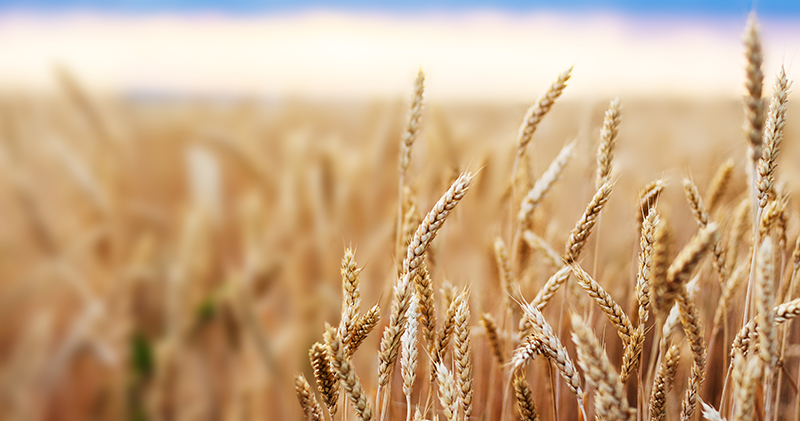High flour price weighs on Bangladeshi economy

Like many developing countries worldwide that rely on imports to meet domestic food requirements, Bangladesh is struggling in the higher global food price environment. It has led to rising domestic food inflation, increased food insecurity, raised social tensions and strained the government’s budget.
Local merchants have dramatically slowed the pace of international purchases, with government data showing imports in the first six months of the 2022-23 marketing year stood at around 2.2 million tonnes (Mt), 50pc lower than the same period last year. While demand is indeed lower, the primary issue appears to be delays in the opening letters of credit arising from a lack of USdollar-denominated foreign currency reserves in Bangladesh.
On August 31 last year, the Bangladeshi Government’s cabinet committee approved the importation of 500,000t of Russian wheat under a government-to-government agreement, with a five-month delivery window. By the end of December, around 400,000t, or 80pc of the agreed quantity, had already been discharged at ports in Bangladesh.
Ukraine is also a major wheat supplier to Bangladesh, with a 56,000t shipment passing inspection in the Bosphorus in the last week of January, bringing total Ukraine shipments since the grain-export corridor opened in July last year to more than 547,000t. Bangladesh is the eighth-largest recipient of Ukraine grain under the United Nations and Türkiye-brokered Black Sea Grain Initiative.
Bangladesh relies heavily on imported wheat to meet domestic demand. Since the Russian invasion of Ukraine in February last year, global supply-chain disruptions and higher international prices have dramatically increased the cost of imported wheat. The situation was further aggravated by India’s wheat export ban on 13 May 2022, and the appreciation of the US dollar against the Bangladesh taka (BDT).
Last month the average retail price of coarse wheat flour, known as atta, hit a record of BDT 61.6 (A$0.85) per kilogram, up around 70pc over the past 12 months and more than double the price in January 2021. The price of higher-quality fine wheat flour, known as maida, also hit a record in January, selling for BDT 72 (A$0.99) /kg.
The high price of all types of wheat flour has driven domestic demand dramatically lower as the consumer turns to other sources of nutrition. And the high prices are expected to persist until the local harvest begins. There is also hope that India will relax the wheat-export ban to traditional Asian customers such as Bangladesh.
Farmers in Bangladesh have increased the area planted to wheat this season for the first time in three years, buoyed by the soaring price of flour in the domestic market. Wheat is the second-most consumed grain in Bangladesh behind rice, but over recent years, farmers have been gradually converting their farmland to higher-return crops such as potatoes, vegetables and rice.
According to the Bangladesh Department of Agriculture, growers planted 319,000ha of wheat in the Northern Hemisphere autumn, up 1.6pc on the 314,000ha planted in the 2021-22 season. The final production is forecast at 1.2Mt when the crop is harvested in April, up from 1.1Mt in 2021-22. While higher than last year, production has been hovering around this level for the past 10 years, and is much lower than the record of 2Mt set in 1999-2000.
In last week’s World Agricultural Supply and Demand Estimates update, the USDA decreased wheat imports for Bangladesh by 700,000t to 5.3Mt compared to its January update as high prices shift demand to more affordably priced rice. This figure is more than 1Mt lower than 2021-22 imports which the USDA pegged at 6.34Mt but is still 300,000t higher than its own Foreign Agricultural Service import estimate of 5Mt, released late last month.
According to the FAS, domestic consumption will fall by more than 1.5Mt, or 18pc, from a record 8.3Mt in the 2021-22 season to 6.8Mt in the current season. Food, seed and industrial consumption, that is, excluding the stockfeed sector, usually makes up more than 90pc of national consumption, and this season the total is projected to be down 1.2Mt to 6.5Mt as lower imports and higher flour prices drive down the intake of atta and maida.
Wheat consumption by the stockfeed sector in 2022-23 is expected to be down by 50pc to 300,000t compared to 2021-22. This is due to a much lower inclusion rate in rations as the wholesale price of wheat hit a record BDT 54.16 (A$0.74) /kg in December, up over 80pc compared to a year earlier.
The Government of Bangladesh recently slashed its wheat import expectations from India after Delhi suggested it should rationalise its proposed annual import quota. The revised proposal for the balance of the current fiscal year has cut wheat imports by 2Mt to 2.5Mt. Some 500,000t of imports have been proposed for Indian Government channels, and 2Mt for private supply channels. Whether or not it happens is an entirely different story.
Bangladesh is an important export destination for Australian wheat, with shipments in the 2022 calendar year totalling 295,000t, or just over 1pc of the nation’s total wheat export campaign of 28.74Mt. Last year’s export figure was down from 451,000t in 2021. All but a 10,000t parcel, shipped in December, departed Australian ports in the first half of 2022 before new-crop Black Sea exports ramped up.
Read also
Wheat in Southern Brazil Impacted by Dry Weather and Frosts
Oilseed Industry. Leaders and Strategies in the Times of a Great Change
Black Sea & Danube Region: Oilseed and Vegoil Markets Within Ongoing Transfor...
Serbia. The drought will cause extremely high losses for farmers this year
2023/24 Safrinha Corn in Brazil 91% Harvested
Write to us
Our manager will contact you soon



